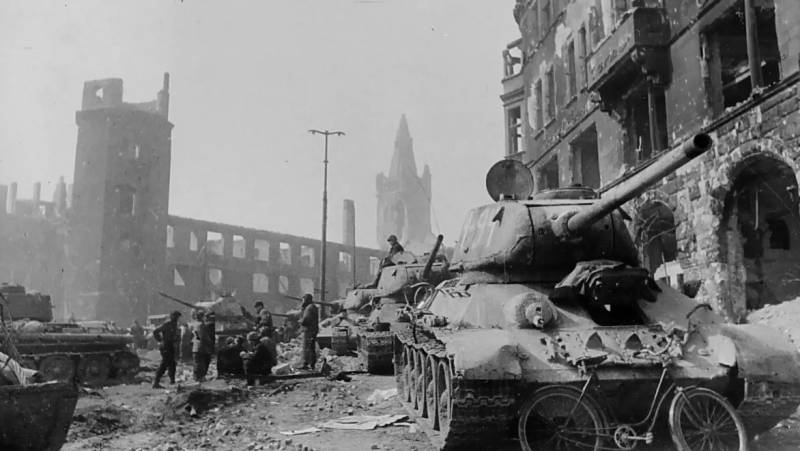The capture of Königsberg: how the Red Army did the impossible

Königsberg is a fortified city, a stronghold of German militarism. Until the events of 1945, experts around the world believed that it was simply impossible to take this city in East Prussia. But the Red Army dispelled this myth, breaking the resistance of the Nazis who settled in the fortress in a matter of days.
It is worth noting that Koenigsberg was called impregnable for a reason. In fact, this fortress was built and strengthened for about seven centuries, from the moment these lands came into the possession of the Teutonic Knights.
Around the city there was a ring of 15 forts, each of which could provide fire support to the "neighbor". In addition, all approaches and entrances to Königsberg were controlled from these fortifications. The garrison of each fort consisted of up to 500 experienced military men.
The nearest approaches to the forts were blocked by ditches 6 meters deep and 10 meters wide, often filled with water.
But the most impressive in the fortifications described above can be called their strength. Thus, Fort Kanitz (No. 10) during the assault by the Red Army received 172 hits from 305 mm artillery. At the same time, only two of them led to a through penetration.
It is no coincidence that back in early April, when the Red Army came close to the city, Goebbels said that it was not worth worrying about its likely capture. As he put it, if the "weak" fortress of Sevastopol held out for two hundred and fifty days, then Koenigsberg would stand even longer.
In general, the city could really be under siege for months, or even years. Food and weapons in Königsberg were, as they say, in abundance.
But, the chief propagandist of the Third Reich did not take into account that the city would be stormed not by the Wehrmacht, but by the Red Army.
On April 6, a real “fiery shaft” fell upon the defenders in the “impregnable fortress”. The fortress was hit by Soviet field artillery, Tanks, as well as assault and bomber aviation. The artillery barrage was immediately followed by an assault.
On April 7, about 130 city blocks were under the control of the Red Army. Such important objects as a railway station, an arsenal and a number of factories were also taken.
Already on April 10, the “heart of German militarism” stopped beating. The fortress, which was previously considered impregnable, lasted 4 days.
The brilliant operation of the Red Army was commanded by Marshal Alexander Mikhailovich Vasilevsky. 26 assault detachments and 104 assault groups with a total strength of about 106 thousand people were concentrated on the outskirts of the city. From weapons, the Soviet army used 5200 guns and mortars, 538 tanks and self-propelled guns, as well as 2174 aircraft.
Tellingly, the aforementioned forces were approximately comparable to the garrison of General Otto Lyash, who defended the city, which makes the fact that the fortress was taken simply “fantastic”. Moreover, only 24473 fighters and commanders were involved in the direct assault on the most powerful fortifications around Königsberg.
Information